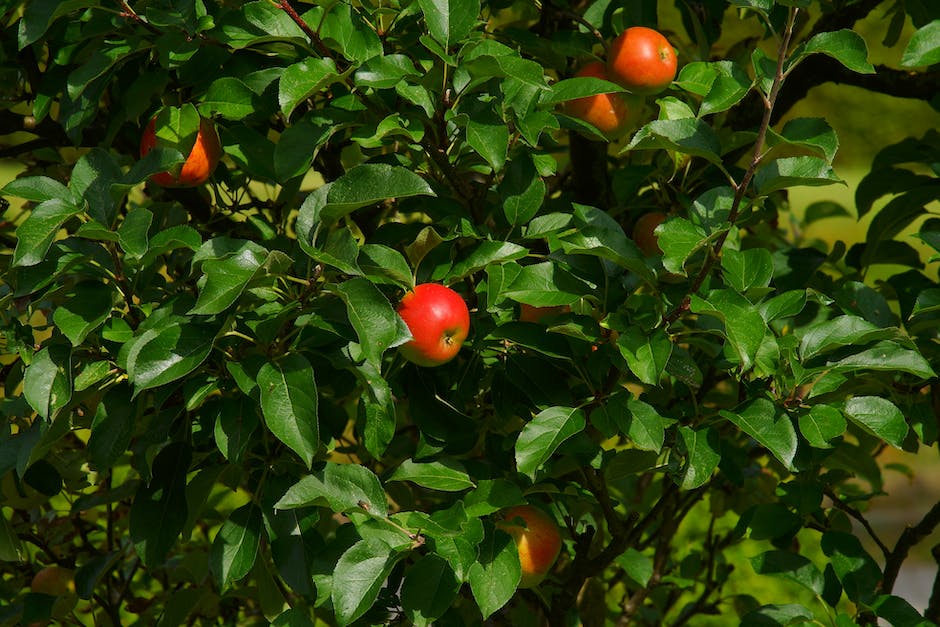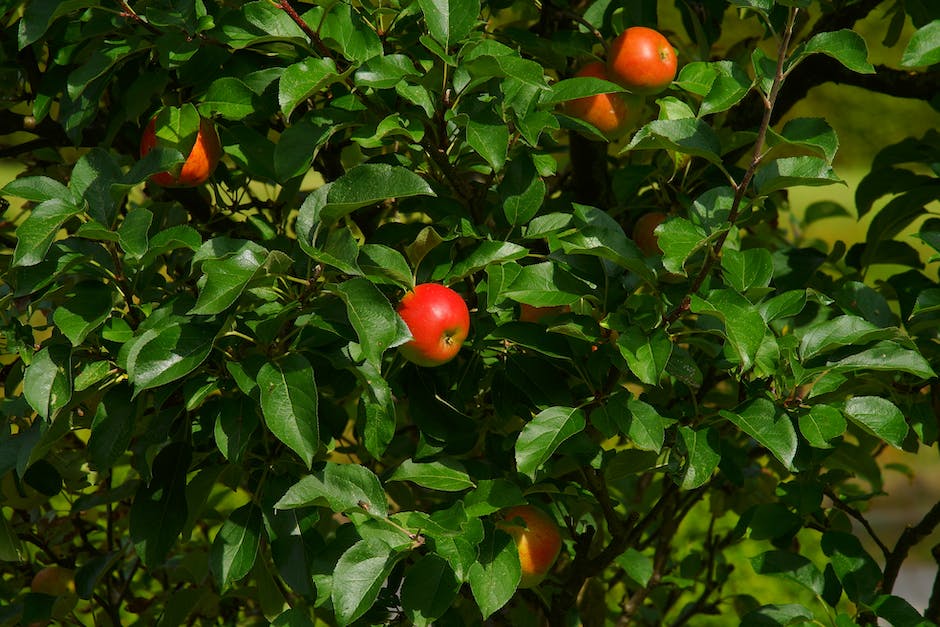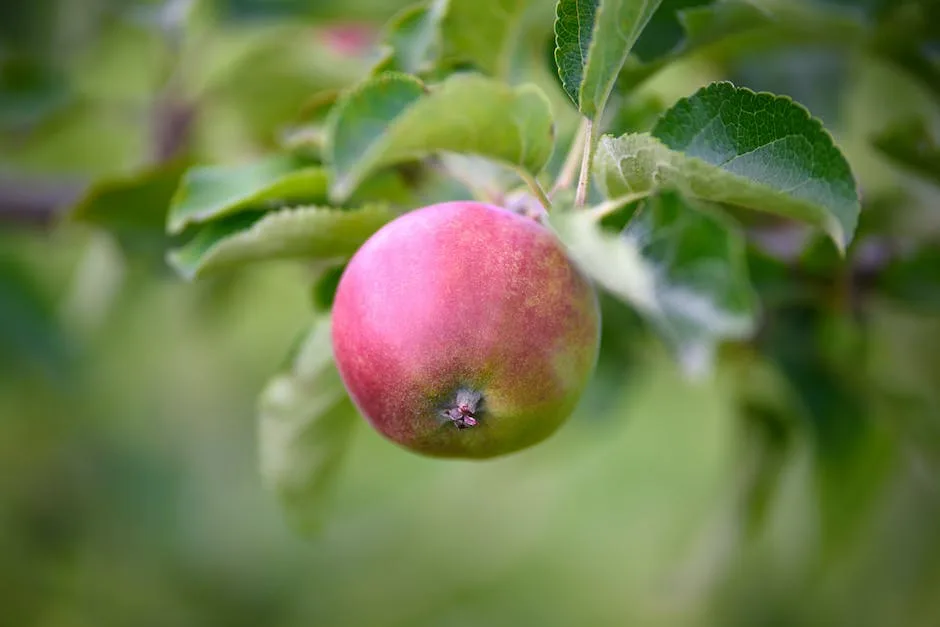Dogs are often thought of as man’s best friend, but there are some things that even the best of friends can’t share. One of those things is apple tree leaves. While apple tree leaves are not poisonous to humans, they can be poisonous to dogs. Dogs who ingest apple tree leaves can experience vomiting, diarrhea, and difficulty breathing. If you have an apple tree in your yard, make sure to keep your dog away from the leaves.
Yes, apple tree leaves are poisonous to dogs. Symptoms of poisoning include vomiting, diarrhea, abdominal pain, and seizures.
Can dogs eat apple leaves?
Apples are safe for dogs to eat as a treat as long as they don’t eat the risky parts of the fruit. The seeds, stems and leaves can be toxic to dogs, so it’s best to avoid those parts.
If you have a fruit tree on your property, be sure to keep an eye on your pets and make sure they don’t eat any of the fruit. If you suspect your pet has eaten something they shouldn’t have, contact your veterinarian immediately.
What tree leaves are poisonous to dogs
Hemlock (Conium maculatum), English Ivy (Hedera helix), both leaves and berries, Mistletoe (Viscum album), and Oleander (Nerium oleander) are all poisonous plants. All parts of these plants are toxic and can cause serious illness or death if ingested. If you suspect that someone has ingested any of these plants, call Poison Control immediately at 1-800-222-1222.
Apple leaves are poisonous if ingested in large quantities. The seeds contain a chemical that can be converted into cyanide, which is poisonous. However, you would need to eat a large amount of seeds to be poisoned. The other parts of the apple, such as the flesh and skin, are not poisonous.
Can dogs chew apple tree branches?
It is important to be aware that wood can be poisonous to dogs if they chew or ingest it. Cherry, chokecherry, elderberry, apricot, peach, plum, and apple trees all produce chemical compounds that can cause cyanide poisoning. If you have any of these trees on your property, make sure your dog does not have access to them.
While leaves and grass are not technically harmful, they can cause a blockage if consumed in large amounts – especially in puppies. Make sure to keep an eye on how often your dog is vomiting, and how much foliage they are consuming. If you are concerned, consult your veterinarian.
What part of apple is toxic to dogs?
Apple seeds can be harmful to dogs if they are ingested. The seeds contain a small amount of cyanide which can be released when they are broken or chewed. If you are concerned that your dog has eaten apple seeds, please contact your veterinarian.
Although pear and apple trees are not particularly toxic, the seeds of these trees contain amygdalin, which is a glycoside that can release cyanide. Eating a large quantity of these seeds could potentially lead to cyanide poisoning.
What fruit trees are toxic to dogs
If you are planning on eating any of the above fruits, it is important to be aware of the potential dangers they pose. Cyanogenic glycosides can cause brick red mucous membranes, dilated pupils, difficulty breathing, panting and shock, while avocados contain a Persin which can cause vomiting and diarrhea. Grapes and raisins can also cause irreversible kidney damage. As such, it is best to err on the side of caution and avoid consuming these fruits if possible.
If you live in an area with heavy pesticide use, be sure to keep an eye on your dog around fallen leaves. While most leaves are safe for dogs to eat, ingestion of pesticides can be harmful. If you notice your dog eating a lot of leaves, keep an eye on them for any signs of intestinal blockage, as this can be a serious issue.
What happens if my dog eats tree branches?
There are a few reasons why wood is bad for your dog. First, small pieces of wood can lodge splinters in the mouth and esophagus, causing damage. Second, large pieces of wood can cause even more significant problems, including perforated intestines or stomach lining and obstruction of your dog’s bowels. If you’re concerned that your dog may have eaten wood, contact your veterinarian immediately.
If your dog exhibits any of the above symptoms, it is possible that they have ingested a poisonous plant. If you suspect that this is the case, you should bring your dog to the vet immediately and administer first aid if possible.
Should I remove leaves from apple tree
Pruning apple trees is essential to the overall health of the tree. By removing diseased or damaged limbs, you are able to control the height of the tree, which allows for easier picking of fruit. In addition, pruning helps to develop a strong structure for fruit production. By encouraging new growth, you are able to keep the apple tree healthy and productive.
The leaves and stems of apple trees are poisonous too. Crabapples, by the way, have the same poisonous properties as full-size apples. Don’t let dogs or cats eat apples, because sometimes they crush the seeds as they eat. Even so, they’d have to eat a lot to be poisoned.
What trees have poisonous leaves?
The following are some of the deadliest trees and plants in the world:
1. The Manchineel: Also known as the “beach apple”, this tree is native to the Caribbean and parts of Central and South America. It is one of the most poisonous trees in the world, and its sap can cause blistering and blindness.
2. The Suicide Tree: Cerbera odollam, also known as the “destroying angel”, is a tree that is native to India and Sri Lanka. It is the most poisonous tree in the world, and its poison has been used in suicides and murders.
3. The Bunya Pine: This tree is native to Australia, and its nuts are poisonous if ingested.
4. Conium maculatum (Hemlock): This plant is native to Europe and North America, and its leaves and seeds are poisonous if ingested.
5. The Sandbox Tree: Hura crepitans, also known as the ” bottle tree”, is native to Central and South America. It is one of the most toxic trees in the world, and its sap can cause sever burns and blindness.
The following are the symptoms of cyanide poisoning: drooling, watery eyes, vomiting, voiding of urine and feces, muscle spasms, and mucous membranes that are bright red at first but then turn bluish in color. Death usually occurs within 30 to 45 minutes during severe convulsions. Cyanide poisoning is a medical emergency and requires immediate treatment.
Is it OK for dogs to chew on tree bark
You should avoid letting your dog eat tree bark because it can cause gastrointestinal irritation or intestinal blockage.
These 100% Natural Apple Branches are perfect for keeping your pet’s teeth clean, trim & healthy. They are 100% safe to feed, and they are ideal for Rabbits, Hamsters, Chinchillas and all Small animals!
How do I get my dog to stop eating leaves
One way to prevent your dog from eating leaves is to keep them active and exercised. This will help tire them out and make them less likely to want to chew on things. You can also keep their toys rotated so they don’t get bored and start looking for something else to chew on. Finally, spending some extra time with your dog can help keep them from getting into trouble. Be sure to be upbeat and happy during your time together to help keep their spirits high.
Tomato plants are poisonous to dogs and cats if they eat the leaves or stems. The plant contains solanine, which is toxic to pets. Symptoms of poisoning include nausea, vomiting, anorexia, and lethargy.
Warp Up
No, apple tree leaves are not poisonous to dogs.
It is safe to say that apples are not poisonous to dogs. While the leaves of the apple tree may be, the fruit itself is not. So, if your dog happens to eat a fallen apple, there’s no need to worry. Just be sure to keep an eye on them in case they start showing signs of illness.
I’ve always been drawn to trees.
As a kid, I spent most of my free time outside, climbing, exploring, and trying to figure out the names of the trees around me.
That early curiosity eventually led me to study arboriculture and horticulture at Michigan State.
Later, I completed a degree in forestry at the University of Michigan.
I’ve been working in tree care and education ever since.
These days, I enjoy helping people learn more about the trees in their own backyards.
How they grow, how to care for them, and why they matter.
You don’t need to be an expert to appreciate trees.
A little curiosity goes a long way.
